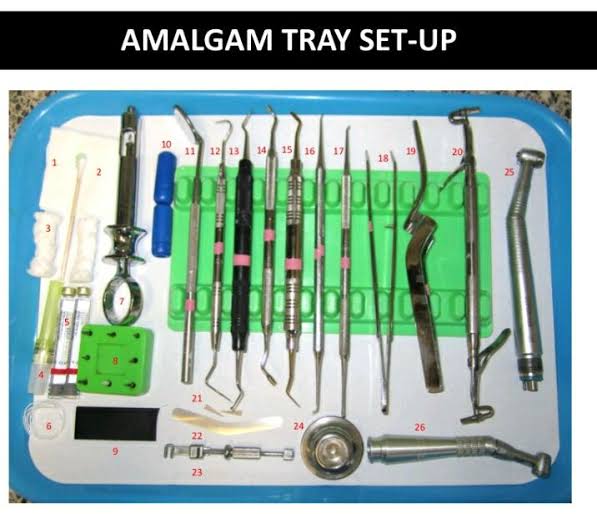Understanding what types of sanitation means…
According to Wikipedia, sanitation refers to public health conditions related to clean drinking water, treatment and disposal of human excreta and sewage. It is also said to be the promotion of hygiene and prevention of disease by the maintenance of sanitary conditions i.e. the removal of sewage and trash.
Importance of Sanitation
- Sanitation keeps disease-carrying waste and insects away from people and their homes.
- It promotes the health status of people by breaking the spread of diseases.
- Prevents the spread of waterborne diseases.
- Sanitation improves the health and quality of life in a place.
- It also prevents environmental pollution such as air, land, and water pollution.
- It helps to prevent contamination of water resources such as surface and groundwater.
 Types of Sanitation
Types of Sanitation
Community-led total sanitation:
Community-led total sanitation which can be abbreviated as CLTS is a types of sanitation used mainly in developing countries to improve sanitation and hygiene practices in a community.
It emphasizes spur-of-the-moment and a long-term behavior change of a whole community.
Community-led total sanitation involves actions leading to increased self-respect and pride in one’s community.
This types of sanitation uses a method to rural sanitation that works without hardware aids.
Container-based sanitation:
Container-based sanitation also abbreviated as CBS is a sanitation system where toilets collect human excreta in sealable and detachable containers that are conveyed to treatment facilities.
This types of sanitation encompasses a commercial service that provides certain types of movable toilets and delivers empty containers in return when picking up full ones. The service conveys and safely disposes of or reuses collected excreta.
The charge of the collection of excreta is customarily borne by the users.
Ecological sanitation:
Ecological sanitation regularly shortened as ECOSAN is a method of sanitation establishment whose main objective is to safely reuse excreta in agriculture.
One of its other aims is to diminish the use of non-renewable resources. When appropriately designed and operated, ECOSAN systems deliver a hygienically safe system to convert human excreta into nutrients to be returned to the soil, and water to be returned to the land.
This sanitation type is also called resource-oriented sanitation.
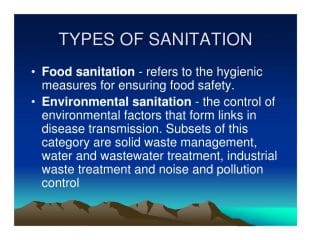
Emergency sanitation:
Emergency sanitation is another type of sanitation that involves the management and technical procedures necessary to provide sanitation in emergencies.
Emergency sanitation is mostly needed during humanitarian relief operations for refugees, people affected by natural disasters, and internally displaced persons. The provision of handwashing facilities is also part of emergency sanitation.
Environmental sanitation:
Environmental sanitation involves the control of environmental factors that are connected to disease transmission.
- Subcategories of this type are solid waste management, water and sewage treatment, industrial waste treatment, and noise pollution control.
Improved and unimproved sanitation:
Improved sanitation is a word used to classify types of sanitation for monitoring purposes.
It refers to the management of human excreta at the household level.
The opposite of improved sanitation has been termed unimproved sanitation.
Onsite sanitation:
Onsite sanitation is a types of sanitation whereby excreta and wastewater are collected and put in storage, or treated on the plot where they are generated. The degree of treatment may be variable, from none to advance. Examples are pit latrines – no treatment and septic tanks – primary treatment of wastewater.
Safely managed sanitation:
Safely managed sanitation is the utmost level of household sanitation. It is a plain sanitation service whereby additional excreta are safely disposed of in situ or transported and treated offsite.
The proportion of the population that is using an improved sanitation facility, which is not shared with other households, and where the excreta produced is either:
- Treated and disposed of in situ,
- Stored temporarily and then emptied and transported to treatment off-site,
- Or transported through a sewer with wastewater and then treated off-site.
Sustainable sanitation:
Sustainable sanitation was intended to meet certain criteria and to work well over the long term.
Sustainable sanitation systems cogitate the entire sanitation value chain from the experience of the user, excreta and wastewater collection methods, transportation or conveyance of waste, treatment, and reuse or disposal.
 Benefits of Improved Sanitation
Benefits of Improved Sanitation
- Reduction in the spread of intestinal worms, schistosomiasis, and trachoma. These are ignored tropical diseases that cause distress for millions of people.
- Reduced severity of the impact of malnourishment.
- Promoted self-worth and boosted safety particularly among women and girls.
- Improved school attendance of girls which is particularly due to the provision of separate sanitary facilities.
- Potential recovery of water from fecal waste.
- Prospective recovery of renewable energy from fecal waste.
- Likely retrieval of nutrients from excreta.
Appropriate and safe sanitation is essential for one’s health. There are many ways to keep the surfaces and items you utilize daily sanitized. From cleaning and sterilizing, dry-cleaning, and correctly washing your hands…upholding safe sanitation can seem more complex than it is.
Proper sanitation techniques can help prevent infections and germs from spreading to you and your loved ones.

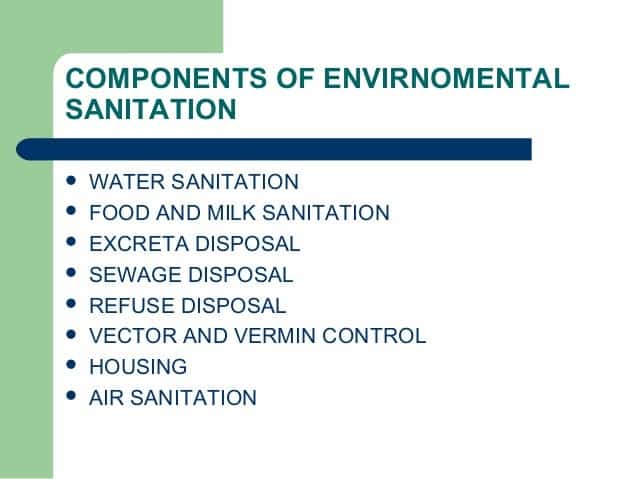
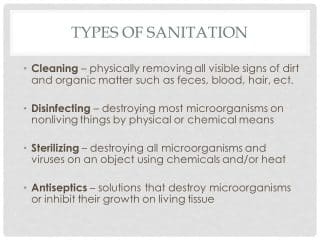 Types of Sanitation
Types of Sanitation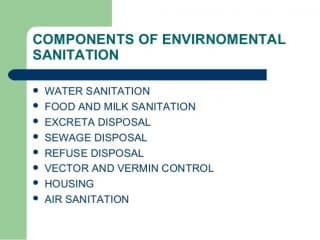 Benefits of Improved Sanitation
Benefits of Improved Sanitation




